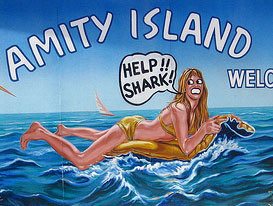Radii Compos
Continuing from last weeks post now looking at Radii composition. This is very similar to circular composition but instead of using circular patterns to guide the eyes its uses a a focal point and lines. see image below.
Fig[1]
L composition
L composition is useful when you want to "frame" something in your pieice. This can be used to increase attention in some areas and less it in others.
Cross composition
cross composition is very similar to "L" composition only it has a cross instead of an L its a cross.
Iconic
Finally we come to iconic which is essentially the subject of the piece is placed in the center taking prominent position among the other details. This technique is often used for subjects of reverence or renown.
Bibliography
Continuing from last weeks post now looking at Radii composition. This is very similar to circular composition but instead of using circular patterns to guide the eyes its uses a a focal point and lines. see image below.
Fig[1]
L composition
L composition is useful when you want to "frame" something in your pieice. This can be used to increase attention in some areas and less it in others.
Cross composition
cross composition is very similar to "L" composition only it has a cross instead of an L its a cross.
Iconic
Finally we come to iconic which is essentially the subject of the piece is placed in the center taking prominent position among the other details. This technique is often used for subjects of reverence or renown.
Bibliography
Straub, Phil. "Phil Straub Composition Tutorial | Cgsociety". The CGSociety. N.p., 2005. Web. 27 Nov. 2016.
Available at: http://www.cgsociety.org/index.php/CGSFeatures/CGSFeatureSpecial/phil_straub_composition_tutorial
Image refrences
Fig[1] https://s-media-cache-ak0.pinimg.com/736x/fd/dd/fa/fdddfa7f2ef714fe2857e64d6818f911.jpg
Image refrences
Fig[1] https://s-media-cache-ak0.pinimg.com/736x/fd/dd/fa/fdddfa7f2ef714fe2857e64d6818f911.jpg


